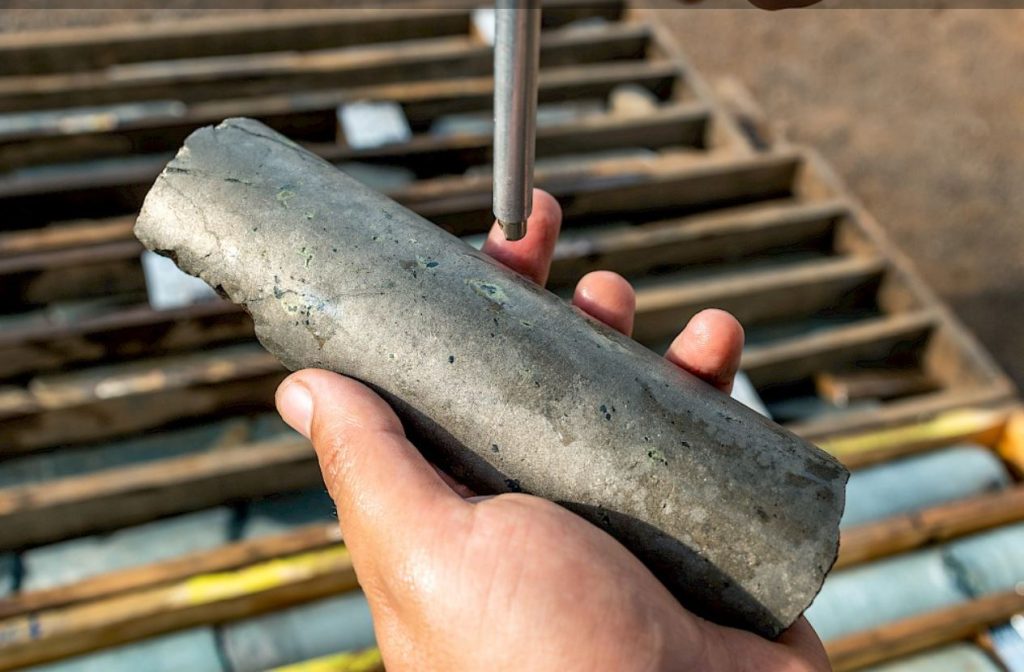Bravo Mining drills 3.12 g/t PGM+Au over 49.02 metres at Luanga, Brazil

Bravo Mining Corp. [TSXV-BRVO; OTCQX-BRVMF] reported assay results from 13 diamond drill holes (DDH) from the Southwest, Central and North sectors at its 100%-owned Luanga palladium-platinum-rhodium-gold-nickel project, located in the Carajas mineral province, state of Para, Brazil.
“The phase 2 drill program is progressing as planned, with results extending PGM+Au+Ni (platinum group metals plus gold plus nickel) mineralization from approximately 150 metres to approximately 400 m below surface, with comparable thicknesses and grades to those intercepted at shallower depths that were tested during our phase 1 program,” said Luis Azevedo, chairman and CEO. “Further, additional evidence of magmatic nickel sulphide mineralization at both the North and Central sectors supports the potential for the nickel sulphide mineralization continuing to depth at Luanga. We continue to be encouraged with such results, particularly as we commence drill testing of priority HeliTEM (airborne electromagnetics) targets.”
Highlights: Geotechnical drill hole DDH23LU202 in the North Sector, located between HeliTEM anomalies T2 and T3 (not yet drill tested) intersected two zones (6.28 metres at 1.21 g/t PGM+Au, 0.80% Ni including 3.28 metres at 1.45g/t PGM+Au, 1.02% Ni, and 5.20 metres at 0.99 g/t PGM+Au, 0.84% Ni) of magmatic nickel sulphide mineralization.
DDH23LU204 (49 metres at 3.12 g/t PGM+Au, 0.33% Ni, including 12 metres at 6.10 g/t PGM+Au, 0.54% Ni), shows the continuation of high-grade mineralization from DDH23LU175 on the section to the north, while directly along strike to the south is the untested HeliTEM anomaly T17.
Magmatic Ni sulphides were also intersected in the ultramafic basal sequence at the northern end of the Central Sector in drill holes DDH23LU201 (0.77m at 1.91g/t PGM+Au, 1.65% Ni) and DDH23LU205 (0.70m at 0.08g/t PGM+Au, 1.43% Ni). These intercepts provide further indications of the potential for higher grade Ni sulphide zones in the basal units, stratigraphically below the PGM+Au+Ni mineral resource.
Drilling testing of the 17 priority HeliTEM targets has started.
Results from 13 diamond drill holes have been received, which includes one of the potential pit-wall geotechnical drill holes and drilling from the Phase 2 Program. Phase 2 drilling is targeting potential extensions of PGM+Au+Ni mineralization down to twice the depth below surface that Bravo drilled in Phase 1. Two of the drill holes reported in this news release are located in the North Sector, including the geotechnical drill hole, seven are in the Central Sector, and three are in the Southwest Sector.
Geotechnical drill hole DDH23LU202 located in the North Sector shows a wide (>100m) zone of magmatic Ni mineralization within which there are two distinct higher-grade Ni zones (6.28 metres at 1.21 g/t PGM+Au, 0.80% Ni, including 3.28 metres at 1.45 g/t PGM+Au, 1.02% Ni, and 5.20 metres at 0.99 g/t PGM+Au, 0.84% Ni), providing further evidence of magmatic nickel sulphides distributed over a significant stratigraphic thickness in the North Sector.
Also potentially significant, DDH23LU202 intersected magmatic nickel sulphides in the gap between HeliTEM anomalies T2 and T3 (yet to be drill tested) and on strike of both EM anomalies.
Section 1 in the Central Sector shows DDH23LU204 (49m at 3.12g/t PGM+Au, 0.33% Ni, including 12m at 6.10g/t PGM+Au, 0.54% Ni), which lies directly along strike from previously reported drill hole DDH23LU175 (54m at 2.33 g/t PGM+Au, 0.22% Ni, including 32 metres at 4.99 g/t PGM+Au, 0.30% Ni).
The results from DDH23LU204 define a continuation of a distinct higher-grade zone of mineralization extending from DDH23LU175 on the section to the north and close to the geographic centre of the Luanga intrusion. Assay results from DDH23LU204 show increased PGM+Au and significantly higher Ni sulphide grades as compared to DDH23LU175 to the north. Directly to the south of DDH23LU204 is HeliTEM anomaly T17, which is scheduled to be drilled in the coming months.
A total of 238 drill holes (103 in 2023) have been completed by Bravo to date, for 51,217.75 metres, including 8 metallurgical holes (not subject to routine assaying).
Results have been reported for 213 Bravo drill holes to date. Assay Results for 17 Bravo drill holes that have been completed are currently outstanding (excluding the metallurgical holes).
The Luanga Project benefits from being in a location close to operating mines, with excellent access and proximity to existing infrastructure, including road, rail, and clean and renewable hydro grid power. A fully funded 63,000-metre infill, step out and exploration drilling is currently underway.
